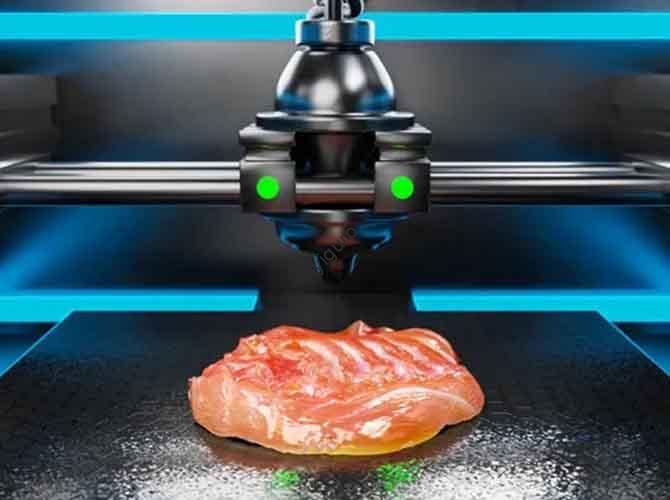3D Druck has revolutionized prototyping and small-batch production, but high costs often hold back enthusiasts and small businesses. Die guten Nachrichten? You don’t need to compromise on quality to save money. This article breaks down actionable, low-cost 3D printing methods that cover design, Materialien, Effizienz, and equipment care—helping you reduce expenses without sacrificing results.
1. Optimize Designs: The First Step to Lower Costs
A well-designed 3D model can drastically cut printing time and material use. Here are three key design strategies, with a comparison of their impact:
| Design Strategy | How It Reduces Costs | Estimated Savings (Pro Druck) |
| Simplified Geometry | Cuts unnecessary details (Z.B., tiny textures) that increase print time and material use. | 15–30% less material/time |
| Hollowed-Out Structures | Replaces solid cores with hollow spaces (for non-load-bearing parts), slashing material consumption. | 25–40% less material |
| Early Manufacturability Check | Avoids reprints due to design flaws (Z.B., unsupported overhangs) that require post-print modifications. | 30–50% (avoids wasted materials/ time) |
Schlüsselfrage: When should you skip hollowing a model?
If the part needs to bear weight (Z.B., ein Werkzeuggriff) or requires structural strength, a solid or partially filled design is better. For decorative items (Z.B., Figuren) or non-functional prototypes, hollowing is ideal.
2. Choose Affordable Materials Wisely
Material costs make up a large portion of 3D printing expenses. Use these tactics to save without losing performance:
2.1 Pick Cost-Effective Materials
Not every project needs high-end filaments. For most basic uses, PLA (Polylactsäure) oder ABS (Acrylnitril Butadiene Styrol) are the best low-cost options. So vergleichen sie sich:
- PLA: Billig (\(20- )30 pro kg), einfach zu drucken (no heated bed needed for some printers), und biologisch abbaubar. Perfect for prototypes, Spielzeug, and decorative parts.
- ABS: Etwas teurer (\(25- )35 pro kg) but more durable and heat-resistant. Great for functional parts like phone cases or small tools.
Avoid specialty materials (Z.B., carbon-fiber reinforced filaments, welche kosten $50+ pro kg) unless your project specifically requires their properties.
2.2 Kaufen Sie in großen Mengen
Purchasing filaments in bulk (Z.B., 5kg or 10kg spools instead of 1kg) reduces the cost per kilogram. Zum Beispiel:
- 1kg PLA spool: ~$25
- 5kg PLA spool: ~ (100 (nur \)20 pro kg)
Das rettet 20% on material costs for regular users. Just ensure you store bulk filaments properly (in a dry box) to prevent moisture damage—moisture can cause printing defects and waste material.
3. Boost Printing Efficiency: Save Time and Reduce Waste
Efficient printing means less time the printer runs (geringere Energieverbrauch) and less material wasted. Befolgen Sie diese Schritte:
3.1 Adjust Printing Settings
Tweak these key parameters to balance speed, Qualität, und Kosten. Use this checklist for optimization:
- Schichthöhe: Für Nicht-Präzisionsteile, increase layer height (Z.B., from 0.15mm to 0.2mm) Um den Drucken zu beschleunigen. This reduces time by ~10–20% without visible quality loss.
- Dichte füllen: Lower fill density (aus 100% to 20–50%) for non-structural parts. A 50% fill uses half the material of a solid print.
- Druckgeschwindigkeit: Geschwindigkeit erhöhen (within your printer’s limits—e.g., von 50 mm/s bis 70 mm/s) für große, einfache Teile. Test first to avoid layer separation.
3.2 Use Slicing Software to Minimize Waste
Software schneiden (Z.B., Behandlung, Prusaslicer) converts 3D models into printer-ready code. Here’s how to use it for cost savings:
- Preview Mode: Check for overhangs or gaps that could cause failed prints. Add supports only where needed (supports use extra material).
- Material Estimator: See how much filament a print will use before starting. Adjust the model size if the material cost is too high.
4. Maintain Your Printer: Avoid Costly Repairs
A well-maintained printer has fewer breakdowns, reducing repair costs and wasted materials. Follow this simple maintenance schedule:
| Frequenz | Aufgabe | Zweck |
| After Every 5 Prints | Clean the print bed (mit Isopropylalkohol) | Ensures parts stick properly (avoids failed prints). |
| Wöchentlich | Lubricate moving parts (Z.B., Stangen, Getriebe) | Reduces friction and prevents wear. |
| Monatlich | Check filament feeder for clogs | Stops filament jams (which waste material and time). |
Für die Spitze: Always use materials compatible with your printer. Zum Beispiel, a PLA-only printer can’t handle high-temperature filaments like PETG—using the wrong material can damage the nozzle or extruder, Kalkulation \(50- )100 in Reparaturen.
Perspektive der Yigu -Technologie
Bei Yigu Technology, we believe low-cost 3D printing shouldn’t mean cutting corners on reliability. Our printers are designed to work seamlessly with affordable materials like PLA/ABS, and we include built-in slicing tools to optimize material use. We often advise users to start with design tweaks—they’re the most cost-effective way to save, as they don’t require extra investments. By combining smart design, affordable materials, and regular maintenance, anyone can make 3D printing accessible without overspending.
FAQ
- Q: Can I reuse failed 3D prints to save material?
A: Ja! You can shred failed prints into plastic pellets and melt them into new filament (using a filament extruder). Jedoch, this requires extra equipment (\(100- )300) and works best for PLA (ABS is harder to recycle at home).
- Q: Is it cheaper to buy a cheap 3D printer or a more expensive one for low-cost printing?
A: A mid-range printer (\(200- )400) ist besser. Cheap printers ($100 or less) often have poor build quality, leading to more failed prints and higher long-term costs. Mid-range printers are more reliable and work with affordable materials.
- Q: How much electricity does a 3D printer use, and can I reduce that cost?
A: Most consumer 3D printers use 50–150 watts (like a small lamp). To save electricity, print multiple parts at once (instead of one at a time) and turn off the printer when not in use. Zum Beispiel, printing two small parts together uses the same energy as one, cutting per-part energy costs by 50%.
